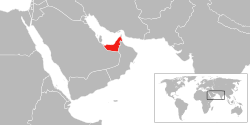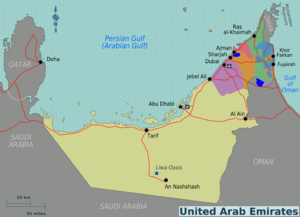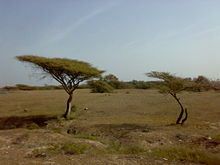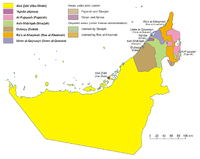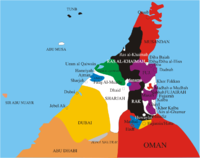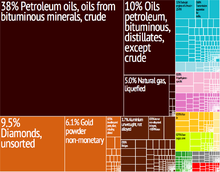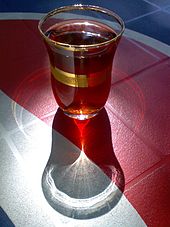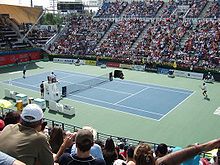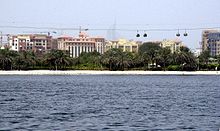
United Arab Emirates
Did you know...
SOS believes education gives a better chance in life to children in the developing world too. With SOS Children you can choose to sponsor children in over a hundred countries
| United Arab Emirates دولة الإمارات العربية المتحدة
Dawlat al-ʾImārāt al-ʿArabiyyah al-Muttaḥidah |
||||||
|---|---|---|---|---|---|---|
|
||||||
| Anthem: Ishy Bilady Long Live My Nation |
||||||
|
|
||||||
| Capital | Abu Dhabi 24°28′N 54°22′E |
|||||
| Largest city | Dubai | |||||
| Official languages | Arabic | |||||
| Ethnic groups (2009) |
|
|||||
| Demonym | Emirati | |||||
| Government | ||||||
| - | President | Khalifa bin Zayed Al Nahyan | ||||
| - | Vice President and Prime Minister | Mohammed bin Rashid Al Maktoum | ||||
| Legislature | Federal National Councilc | |||||
| Sovereignty | ||||||
| - | United Kingdom treaties ended | December 1, 1971 | ||||
| - | Constitution | December 2, 1971 | ||||
| Area | ||||||
| - | Total | 83,600d km2 ( 116th) 32,278 sq mi |
||||
| - | Water (%) | negligible | ||||
| Population | ||||||
| - | 2010 estimate | 8,264,070 ( 93rd) | ||||
| - | 2005 census | 4,106,427 | ||||
| - | Density | 99/km2 ( 110th) 256/sq mi |
||||
| GDP ( PPP) | 2011 estimate | |||||
| - | Total | $258.825 billion | ||||
| - | Per capita | $48,158 | ||||
| GDP (nominal) | 2011 estimate | |||||
| - | Total | $360.136 billion | ||||
| - | Per capita | $67,008 | ||||
| Gini (2008) | 36 medium |
|||||
| HDI (2013) | very high · 41st |
|||||
| Currency | UAE dirham ( AED) |
|||||
| Time zone | GST ( UTC+4) | |||||
| - | Summer ( DST) | not observed ( UTC+4) | ||||
| Date format | dd/mm/yyyy | |||||
| Drives on the | right | |||||
| Calling code | +971 | |||||
| ISO 3166 code | AE | |||||
| Internet TLD |
|
|||||
| a. | Predominantly Indian, Pakistani and Bangladeshi people. | |||||
| b. | Predominantly Chinese, Filipino, Thai, Iranian, South Korean and Afghani (Pashtun) people. | |||||
| c. | Seven emirates and one advisory body. | |||||
| d. | The country's exact size is unknown because of disputed claims to several islands in the Persian Gulf, the lack of precise information on the size of many of these islands and that most of its land boundaries, especially those with Saudi Arabia, remain un-demarcated. | |||||
|
United Arab Emirates portal
|
||||||
The United Arab Emirates / juː ˌ n aɪ t ɨ d ˌ ær ə b ˈ ɛ m ɪr ɨ t s / (Arabic: دولة الإمارات العربية المتحدة Dawlat al-ʾImārāt al-ʿArabiyyah al-Muttaḥidah), sometimes simply called the Emirates or the UAE, is an Arab country in the southeast of the Arabian Peninsula on the Persian Gulf, bordering Oman to the east and Saudi Arabia to the south, as well as sharing sea borders with Qatar and Iran.
The UAE is a federation of seven emirates (equivalent to principalities), each governed by a hereditary emir, who choose one of their members to be the president of the federation. The constituent emirates are Abu Dhabi, Ajman, Dubai, Fujairah, Ras al-Khaimah, Sharjah, and Umm al-Quwain. The capital is Abu Dhabi, which is also the state's centre of political, industrial, and cultural activities. Islam is the official religion of the UAE, and Arabic is the official language.
Since 1962, when Abu Dhabi became the first of the emirates to begin exporting oil, the country's society and economy were transformed. The late Sheikh Zayed, ruler of Abu Dhabi and president of the UAE at its inception, oversaw the development of all the emirates and directed oil revenues into healthcare, education and the national infrastructure.
UAE oil reserves are ranked as the world's seventh-largest. It also possesses the world's seventh largest reserves natural gas resources and it is one of the most developed economies in Western Asia. Per capita income is the world's seventh-highest.
History
The earliest known human habitation in the UAE dated from 5500 BC. At this early stage, there is proof of interaction with the outside world, particularly with civilizations to the north west in Mesopotamia. These contacts persisted and became wide-ranging, probably motivated by trade in copper from the Hajar Mountains, which commenced around 3000 BC. Foreign trade, the recurring motif in the history of this strategic region, flourished also in later periods, facilitated by the domestication of the camel at the end of the second millennium BC.
By the 1st century AD overland caravan traffic between Syria and cities in southern Iraq began. Also, there was seaborne travel to the important port of Omana (present-day Umm al-Qaiwain) and then to India. These routes were an alternative to the Red Sea route used by the Romans. Pearls had been exploited in the area for millennia but at this time the trade reached new heights. Seafaring was also a mainstay and major fairs were held at Dibba, bringing in merchants from as far as China.
Advent of Islam
The arrival of envoys from the Islamic prophet Muhammad in 630 heralded the conversion of the region to Islam. After Muhammad, one of the major battles of the Ridda Wars was fought at Dibba resulting in the defeat of the non-Muslims and the triumph of Islam in the Arabian Peninsula.
In 637, Julfar (today Ra's al-Khaimah) was used as a staging post for the Islamic invasion of Sasanian Iran. Over many centuries, Julfar became a wealthy port and pearling centre from which dhows travelled throughout the Indian Ocean especially to neighboring land of Sindh and its cities of Thatta and Debal.
Portuguese and British control
Portuguese expansion into the Indian Ocean in the early 16th century following Vasco da Gama's route of exploration saw them battle Safavid Persia up the coast of the Persian Gulf. The Portuguese controlled the area for 150 years, in which they conquered the inhabitants of the Arabian Peninsula. Vasco da Gama was helped by Ahmad Ibn Majid, a navigator and cartographer from Julfar, to find the spice route from Asia.
During the 16th century, piecemeal, the entire territory of the nation came under the direct influence of the European colonial empires, with the British eventually getting the upper hand. The region was known to the British as the " Pirate Coast", as raiders based there harassed the shipping industry despite both European and Arab navies patrolling the area from the 17th century into the 19th. British expeditions to protect the Indian trade from raiders at Ras al-Khaimah led to campaigns against that headquarters and other harbours along the coast in 1819. The following year, Britain and local rulers signed a treaty to combat piracy along the Gulf coast. From this, and later agreements, the area becomes known as the Trucial Coast. Raids continued intermittently until 1835, when the sheikhs agreed not to engage in hostilities at sea. In 1853, they signed a treaty with the British, under which the sheikhs (the "Trucial Sheikhdoms") agreed to a "perpetual maritime truce." It was enforced by the United Kingdom, and disputes among sheikhs were referred to the British for settlement.
Primarily in reaction to the ambitions of other European countries, the United Kingdom and the Trucial Sheikhdoms established closer bonds in an 1892 treaty, similar to treaties entered into by Britain with other principalities in the Persian Gulf. The sheikhs agreed not to dispose of any territory except to Britain and not to enter into relationships with any foreign government other than the United Kingdom without its consent. In return, the British promised to protect the Trucial Coast from all aggression by sea and to help in case of land attack. British suppression of piracy meant that pearling fleets could operate in relative security. However, the British prohibition of the slave trade meant an important source of income was lost to some sheikhs and merchants.
Pearling industry
During the 19th and early 20th centuries, the pearling industry thrived in the relatively calm sea, providing both income and employment to the people of the Persian Gulf. It began to become a good economic resource for the local people. Then the First World War had a severe impact on the pearl fishery, but it was the economic depression of the late 1920s and early 1930s, coupled with the Japanese invention of the cultured pearl, that all but destroyed it. The industry eventually faded away shortly after the Second World War, when the newly independent Government of India imposed heavy taxation on pearls imported from the Arab states of the Persian Gulf.
The decline of pearling resulted in a very difficult era, with little opportunity to build any infrastructure.
Beginning of the oil era
Oil was first discovered in the 1950s. At the beginning of the 1960s, the first oil company teams carried out preliminary surveys and the first cargo of crude was exported from Abu Dhabi in 1962. As oil revenues increased, the ruler of Abu Dhabi, Zayed bin Sultan Al Nahyan, undertook a massive construction program, building schools, housing, hospitals and roads. When Dubai’s oil exports commenced in 1969, Rashid bin Saeed Al Maktoum, the de facto ruler of Dubai, was also able to use oil revenues to improve the quality of life of his people.
In 1955, the United Kingdom sided with Abu Dhabi in the latter's dispute with Oman over the Buraimi Oasis, another territory to the south. A 1974 agreement between Abu Dhabi and Saudi Arabia would have settled the Abu Dhabi-Saudi border dispute; however, the agreement has yet to be ratified by the UAE government and is not recognized by the Saudi government. The border with Oman also remains officially unsettled, but the two governments agreed to delineate the border in May 1999.
The British had set up a development office that helped in some small developments in the emirates. The seven sheikhs of the emirates then decided to form a council to coordinate matters between them and took over the development office. In 1952, they formed the Trucial States Council, and appointed Adi Bitar, Sheikh Rashid bin Saeed Al Maktoum's legal advisor, as Secretary General and Legal Advisor to the Council. The council was terminated once the United Arab Emirates was formed. The development of the oil industry in the 1960s, encouraged unification of the sheikdoms. Zayed bin Sultan Al Nahyan became ruler of Abu Dhabi in 1966 and the British started losing their oil investments and contracts to U.S. oil companies. As independence loomed in 1968, Bahrain and Qatar joined the Trucial States. Differences caused them to leave the union in 1971.
Independence
By 1966 it became clear the British Government could no longer afford to govern what is now the United Arab Emirates. British MPs debated in Parliament that the Royal Navy would not be able to defend the trucial sheikhdoms. Denis Healey, who at the time was the Secretary of State for Defence reported that the British Armed Forces were seriously overstretched and in some respects dangerously under-equipped to defend the trucial sheikhdoms. On 24 January 1968, British Prime Minister Harold Wilson announced its decision, reaffirmed in March 1971 by Prime Minister Edward Heath to end the treaty relationships with the seven trucial sheikhdoms that had been, together with Bahrain and Qatar, under British protection. Days after the announcement, the ruler of Abu Dhabi Sheikh Zayed bin Sultan Al Nahyan, fearing vulnerability, tried to persuade the British to honour the protection treaties by providing the full costs of keeping the British Armed Forces in the Emirates. Not only did the British Labour government rebuff the offer, it did so in a way that offended the Emirati rulers. After Labour MP Goronwy Roberts informed Sheikh Zayed of the news of British withdrawal, the nine Gulf sheikhdoms attempted to form a union of Arab emirates, but by mid-1971 they were still unable to agree on terms of union even though the British treaty relationship was to expire in December of that year.
Bahrain became independent in August, and Qatar in September 1971. When the British-Trucial Sheikhdoms treaty expired on December 1, 1971, they became fully independent. The rulers of Abu Dhabi and Dubai decided to form a union between their two emirates independently, prepare a constitution, then call the rulers of the other five emirates to a meeting and offer them the opportunity to join. It was also agreed between the two that the constitution be written by December 2, 1971. On that date, at the Dubai Guesthouse Palace, four other emirates agreed to enter into a union called the United Arab Emirates. Ras al-Khaimah joined later, in early 1972. In February 1972, the Federal National Council (FNC) was created; it was a 40 member consultative body appointed by the seven rulers.
The UAE joined the Arab League in 1971. It was a founding member of the Gulf Cooperation Council in May 1981 and its first summit is held in Abu Dhabi. UAE forces joined the allies against Iraq after the invasion of Kuwait in 1991.
The UAE supported military operations from the United States and other Coalition nations that are engaged in the war against the Taliban in Afghanistan (2001) and Saddam Hussein in Iraq (2003) as well as operations supporting the Global War on Terrorism for the Horn of Africa at Al Dhafra Air Base located outside of Abu Dhabi. The air base also supported Allied operations during the 1991 Persian Gulf War and Operation Northern Watch. The country had already signed a military defense agreement with the U.S. in 1994 and one with France in 1995. In January 2008, France and the UAE signed a deal allowing France to set up a permanent military base in the emirate of Abu Dhabi. The UAE joined international military operations in Libya in March 2011.
On 2 November 2004, the UAE's first president, Sheikh Zayed bin Sultan Al Nahyan, died. His eldest son, Sheikh Khalifa bin Zayed Al Nahyan, succeeded as Emir of Abu Dhabi. In accordance with the constitution, the UAE's Supreme Council of Rulers elected Khalifa as president. Sheikh Mohammad bin Zayed Al Nahyan succeeded Khalifa as Crown Prince of Abu Dhabi. In January 2006, Sheikh Maktoum bin Rashid Al Maktoum, the prime minister of the UAE and the ruler of Dubai, died, and the crown prince Sheikh Mohammed bin Rashid Al Maktoum assumed both roles.
The first-ever national elections were held in the UAE on 16 December 2006. A small number of hand-picked voters chose half of the members of the Federal National Council—which is an advisory body.
Largely unaffected by the Arab Spring turmoil, the government has nonetheless clamped down on Internet activism. In April 2011, five activists who signed an online petition calling for reforms were imprisoned. They were pardoned and released in November. Since March 2012 more than 60 activists have been detained without charge - some of them supporters of the Islah Islamic group. A member of the ruling family in Ras al-Khaimah was put under house arrest in April 2012 after calling for political openness. Mindful of the protests in nearby Bahrain, in November 2012 the UAE outlawed online mockery of its own government or attempts to organise public protests through social media.
Geography
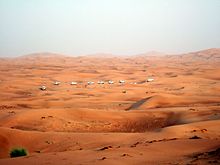
The United Arab Emirates is situated in Southwest Asia, bordering the Gulf of Oman and the Persian Gulf, between Oman and Saudi Arabia; it is in a strategic location along southern approaches to the Strait of Hormuz, a vital transit point for world crude oil.
The UAE lies between 22°30' and 26°10' north latitude and between 51° and 56°25′ east longitude. It shares a 530-kilometer border with Saudi Arabia on the west, south, and southeast, and a 450-kilometer border with Oman on the southeast and northeast. The land border with Qatar in the Khawr al Udayd area is about nineteen kilometers in the northwest; however, it is a source of ongoing dispute. Following Britain's military departure from UAE in 1971, and its establishment as a new state, the UAE laid claim to islands resulting in disputes with Iran that remain unresolved. UAE also disputes claim on other islands against the neighboring state of Qatar. The largest emirate, Abu Dhabi, accounts for 87% of the UAE's total area (67,340 square kilometers). The smallest emirate, Ajman, encompasses only 259 square kilometers (see figure).
The UAE coast stretches for more than 650 kilometers along the southern shore of the Persian Gulf. Most of the coast consists of salt pans that extend far inland. The largest natural harbour is at Dubai, although other ports have been dredged at Abu Dhabi, Sharjah, and elsewhere. Numerous islands are found in the Persian Gulf, and the ownership of some of them has been the subject of international disputes with both Iran and Qatar. The smaller islands, as well as many coral reefs and shifting sandbars, are a menace to navigation. Strong tides and occasional windstorms further complicate ship movements near the shore. The UAE also has a stretch of the Al Bāţinah coast of the Gulf of Oman, although the Musandam Peninsula, the very tip of Arabia by the Strait of Hormuz is an enclave of Oman within the UAE.
South and west of Abu Dhabi, vast, rolling sand dunes merge into the Rub al-Khali (Empty Quarter) of Saudi Arabia. The desert area of Abu Dhabi includes two important oases with adequate underground water for permanent settlements and cultivation. The extensive Liwa Oasis is in the south near the undefined border with Saudi Arabia. About 100 kilometers to the northeast of Liwa is the Al-Buraimi oasis, which extends on both sides of the Abu Dhabi-Oman border.
Prior to withdrawing from the area in 1971, Britain delineated the internal borders among the seven emirates in order to preempt territorial disputes that might hamper formation of the federation. In general, the rulers of the emirates accepted the British intervention, but in the case of boundary disputes between Abu Dhabi and Dubai, and also between Dubai and Sharjah, conflicting claims were not resolved until after the UAE became independent. The most complicated borders were in the Al-Hajar al-Gharbi Mountains, where five of the emirates contested jurisdiction over more than a dozen enclaves.
Flora and fauna
The oases grow date palms, acacia and eucalyptus trees. In the desert the flora is very sparse and consists of grasses and thornbushes. The indigenous fauna had come close to extinction because of intensive hunting, which has led to a conservation program on Bani Yas island initiated by Sheikh Zayed bin Sultan Al Nahyan in the 1970s, resulting in the survival of, for example, Arabian oryx and leopards. Coastal fish and mammals consist mainly of mackerel, perch and tuna, as well as sharks and whales.
Climate
The climate of the U.A.E is subtropical-arid with hot summers and warm winters. The hottest months are July and August, when average maximum temperatures reach above 40 °C (104.0 °F) on the coastal plain. In the Al Hajar Mountains, temperatures are considerably lower, a result of increased elevation. Average minimum temperatures in January and February are between 10 and 14 °C (50 and 57.2 °F). During the late summer months, a humid southeastern wind known as Sharqi (i.e. "Easterner") makes the coastal region especially unpleasant. The average annual rainfall in the coastal area is less than 120 mm (4.7 in), but in some mountainous areas annual rainfall often reaches 350 mm (13.8 in). Rain in the coastal region falls in short, torrential bursts during the summer months, sometimes resulting in floods in ordinarily dry wadi beds. The region is prone to occasional, violent dust storms, which can severely reduce visibility. The Jebel Jais mountain cluster in Ras al-Khaimah has experienced snow only twice since records began.
Government and politics
The United Arab Emirates is a federation of absolute hereditary monarchies. It is governed by a Federal Supreme Council made up of the seven emirs of Abu Dhabi, Ajman, Fujairah, Sharjah, Dubai, Ras al-Khaimah and Umm al-Qaiwain. All responsibilities not granted to the national government are reserved to the emirates. A percentage of revenues from each emirate are allocated to the UAE’s central budget.
Although elected by the Supreme Council, the president and prime minister are essentially hereditary. The emir of Abu Dhabi holds the presidency, and the emir of Dubai is prime minister. All but one prime minister served concurrently as vice president. Sheikh Zayed bin Sultan Al Nahyan was the UAE's president from the nation's founding until his death on November 2, 2004. On the following day the Federal Supreme Council elected his son, Sheikh Khalifa bin Zayed Al Nahyan, to the post. Abu Dhabi's crown prince, Mohammed bin Zayed Al Nahyan, is the heir apparent.
The UAE convened a half-elected Federal National Council in 2006. The FNC consists of 40 members drawn from all the emirates. Half are appointed by the rulers of the constituent emirates, and the other half are indirectly elected to serve two-year terms. However, the FNC is restricted to a largely consultative role. In December 2008, the Supreme Council approved constitutional amendments both to empower the FNC and to improve government transparency and accountability.
The United Arab Emirates (UAE) eGovernment is the extension of the UAE Federal Government in its electronic form.
Law
The Constitution of the United Arab Emirates confers equality, liberty, rule of law, presumption of innocence in legal procedures, inviolability of the home, freedom of movement, freedom of opinion and speech, freedom of communication, freedom of religion, freedom of council and association, freedom of occupation, freedom to be elected to office and others onto all citizens, within the limit of the law.
A constitutionally independent judiciary includes the Federal Supreme Court. However, Dubai and Ras al-Khaimah do not belong to the national judiciary. All emirates have their own secular and Islamic law for civil, criminal, and high courts.
The court system comprises Sharia courts and civil courts. The Personal Status Law, which is based on Sharia and was enacted in 2005, regulates matters such as marriage, divorce and child custody. In criminal matters a woman’s testimony is worth half of that of a man before a court. Sharia courts have exclusive jurisdiction to hear family disputes, including matters involving divorce, inheritances, child custody, child abuse and guardianship of minors. Sharia courts may, at the federal level only, also hear appeals of certain criminal cases including rape, robbery, driving under the influence of alcohol and related crimes. Dubai and Ras Al Khaimah are not part of the federal judicial system.
Homosexual relationships are illegal: article 80 of the Abu Dhabi Penal Code makes sodomy punishable with imprisonment of up to 14 years, while article 177 of the Penal Code of Dubai imposes imprisonment of up to 10 years on consensual sodomy. Foreigners generally receive deportation, which is sometimes temporary. Prospective foreign employees infected with hepatitis, tuberculosis, or HIV will not be given work visas and have to leave the country.
During the month of Ramadan, between sunrise and sunset, it is illegal to publicly eat, drink (even water), or smoke. Exceptions are made for pregnant or nursing women, as well as children. This applies to non-Muslims as well as Muslims, and failure to comply may result in arrest.
Article 1 of the 1987 Federal Penal Code states that "provisions of the Islamic Law shall apply to the crimes of doctrinal punishment, punitive punishment and blood money." The Federal Penal Code repealed only those provisions within the penal codes of individual Emirates which are contradictory to the Federal Penal Code. Hence, both are enforceable simultaneously.
The Federal Supreme Court ruled that domestic violence is not illegal, as long as it leaves no physical marks on the victim.
Human rights
Many expatriate workers, mostly of South Asian origin, have after their arrival in the UAE been turned into debt-ridden de facto indentured servants. Confiscation of passports, although illegal, occurs on a large scale, primarily from unskilled or semi-skilled employees.
Labourers often toil in intense heat with temperatures reaching 54 degrees celsius (129 degrees Fahrenheit) in the cities in August. Temperatures in the desert can be higher. Official temperatures are censored during the summer months – this is a common practice among all Gulf countries. Although attempts have been made since 2009 to enforce a midday break rule, these are frequently flouted. Those labourers who do receive a midday break often have no suitable place to rest.
Police departments and non-Government organizations provide shelter and support for human trafficking victims until they are able to acquire the right documents and many victims are then sent home at the Government’s expense, under the Crime Victim Assistance Programme. These shelters include the Dubai Women's and Children's Foundation, which was established in July 2007, and Ewaa in Abu Dhabi, which opened in late 2008, as well as the Human Rights Care Department in Dubai and the Social Support Centre in Abu Dhabi, which have been operating for several years.
The issue of sexual abuse among female domestic servants is an area of concern, particularly given that domestic servants are not covered by the UAE Labor Law of 1980 or the Draft Labor Law of 2007. Worker protests have been cracked down on.
In 2004, the Dubai police opened designated departments in all emirate police stations that are mandated to protect the human rights of both victims and perpetrators of crime.
The UAE government is currently studying the establishment of a national human-rights commission.
Foreign relations

The UAE’s liberal climate towards foreign cooperation, investment and modernization has prompted extensive diplomatic and commercial relations with other countries. It plays a significant role in OPEC and the UN, and is one of the founding members of the Gulf Cooperation Council (GCC).
The Emirates have long maintained close relations with Egypt and remain the highest investor in the country from among the rest of the Arab world. Pakistan had been first to formally recognize the UAE upon its formation and continues to be one of its major economic and trading partners with about 400,000 expatriates receiving employment in the UAE.
India’s large expat community in the UAE also has over the centuries evolved into current close political, economic and cultural ties. The largest demographic presence in the Emirates is Indian. Following British military withdrawal from UAE in 1971, and the establishment of UAE as a newly formed state, the UAE disputes rights to a number of islands in the Persian Gulf against Iran. However the dispute has not significantly impacted relations because of the large Iranian community presence and strong economic ties.
In its dispute with the USA and Israel, Iran has repeatedly threatened to close the strait at the mouth of the Persian Gulf, a vital oil-trade route. Therefore, in July 2012, the UAE began operating a key overland oil pipeline which bypasses the Strait of Hormuz.
Commercially, the UK and Germany are the UAE’s largest export markets and bilateral relations have long been close as a large number of their nationals reside in the UAE.
Diplomatic relations between UAE and Japan were established as early as UAE's independence in December 1971. The two countries had always enjoyed friendly ties and trade between each other. Exports from the UAE to Japan include crude oil and natural gas and imports from Japan to UAE include cars and electric items.
Foreign aid
The UAE has continuously been a major contributor of emergency relief to regions affected by conflict and natural disasters in the developing world. The main UAE governmental agency for foreign aid is the Abu Dhabi Fund for Development (ADFD) which was established in 1971. Since its establishment, the ADFD has provided over Dh12.6 billion (US$3.45 billion) in soft loans and grants to countries mainly in Africa. Since 1971, these have accounted for a further Dh10 billion (US$2.7 billion), bringing the total amount of the loans, grants and investments provided by the fund or the Abu Dhabi government, and managed by the fund, to around Dh24 billion (US$6.5 billion), covering 258 different projects in a total of 52 countries.
In November 2008 the Abu Dhabi Fund announced a long term loan of around US$278 million for rehabilitation of agricultural land in the state of Uzbekistan. Between 1994 to mid-2008, for example, around Dh15.4 billion (US$4.2 billion) has been provided for the Palestinians, including, most recently, US$300 million pledged at a donor conference in Paris and an annual commitment of US$43 million to support the Palestine National Authority.
The UAE has also used the Red Crescent authority and charities such as Dubai Cares and Noor Dubai to donate aid to foreign countries.
Military
France and the United States have played the most strategically significant roles with defense cooperation agreements and military material provision. The UAE discussed with France the possibility of a purchase of 60 Rafale fighter aircraft in January 2013.
Political divisions
The United Arab Emirates is divided into seven emirates. Abu Dhabi is the most populated Emirate with 38% of the UAE population. The city of Dubai has a further 30%, so over two-thirds of the UAE population live in either Abu Dhabi or Dubai.
Abu Dhabi has an area of 67,340 square kilometres, which is 86.7% of the country’s total area, excluding the islands. It has a coastline extending for more than 400 kilometres and is divided for administrative purposes into three major regions. The Emirate of Dubai extends along the Persian Gulf coast of the UAE for approximately 72 kilometres. Dubai has an area of 3,885 square kilometers, which is equivalent to 5% of the country’s total area, excluding the islands. The Emirate of Sharjah extends along approximately 16 kilometers of the UAE’s Persian Gulf coastline and for more than 80 kilometers into the interior. The northern emirates which include Fujairah, Ajman, Ras al-Khaimah, and Umm al-Qaiwain all have a total area of 3,881 square kilometres. There are two areas under joint control. One is jointly controlled by Oman and Ajman, the other by Fujairah and Sharjah.
There is an Omani exclave surrounded by UAE territory, known as Wadi Madha. It is located halfway between the Musandam peninsula and the rest of Oman in the Emirate of Sharjah. It covers approximately 75 square kilometres (29 sq mi) and the boundary was settled in 1589. The north-east corner of Madha is closest to the Khor Fakkan-Fujairah road, barely 10 metres (33 ft) away. Within the Omani exclave of Madha, is a UAE exclave called Nahwa, also belonging to the Emirate of Sharjah. It is about 8 kilometres (5 mi) on a dirt track west of the town of New Madha. It consists of about forty houses with its own clinic and telephone exchange.
| Flag | Emirate | Capital | Population | % of total population | Area (km²) | Area (mi²) | % of total area | Density |
|---|---|---|---|---|---|---|---|---|
| Abu Dhabi | Abu Dhabi | 1,548,655 | 31.2% | 67,340 | 26,000 | 86.7% | 25 | |
| Ajman | Ajman | 372,923 | 7.5% | 259 | 100 | 0.3% | 996 | |
| Dubai | Dubai | 1,770,533 | 35.6% | 3,885 | 1,500 | 5.0% | 336 | |
| Fujairah | Fujairah | 137,940 | 2.9% | 1,165 | 450 | 1.5% | 109 | |
| Ras al-Khaimah | Ras al-Khaimah | 171,903 | 3.4% | 1,684 | 650 | 2.2% | 122 | |
| Sharjah | Sharjah | 895,252 | 18.0% | 2,590 | 1,000 | 3.3% | 262 | |
| Umm al-Quwain | Umm al-Qaiwain | 69,936 | 1.4% | 777 | 300 | 0.9% | 88 | |
| UAE | Abu Dhabi | 4,967,142 | 100% | 77,700 | 30,000 | 100% | 56 |
Economy
The UAE has a relatively high Human Development Index among Asian continent, ranking thirtieth globally. In 2011, UAE is ranked as the 14th best nation in the world for doing business based on its economy and regulatory environment, ranked by the Doing Business 2011 Report published by the World Bank Group
The GDP growth rate for 2010 was 3.20%. CPI inflation in the April 2008 — April 2009 year was 1.9%. The national debt as of June 2009 was $142 billion. In 2009, its GDP, as measured by purchasing power parity, stood at US$ 400.4 billion. With a population of just under 900,000 Abu Dhabi was labeled "The richest city in the world" by a CNN article .
Petroleum and natural gas exports play an important role in the economy, especially in Abu Dhabi. More than 85% of the UAE's economy was based on the exports of natural resources in 2009. The UAE has tried to reduce its dependency on oil exports by diversifying the economy, particularly in the financial, tourism and construction sectors. While Abu Dhabi remained relatively conservative in its approach, Dubai, which has far smaller oil reserves, was bolder in its diversification policy.
Emirati law does not allow trade unions to exist. The right to collective bargaining and the right to strike are not recognised, and the Ministry of Labour has the power to force workers to go back to work. Migrant workers who participate in a strike can have their work permits cancelled and be deported.
The UAE's economy, particularly that of Dubai, was badly hit by the financial crisis of 2007–2010. In 2009, the country's economy shrank by 4.00% and the property sector and construction went into decline. However, tourism, trade and the retail sector have remained buoyant and the UAE's overseas investments are expected to support its full economic recovery. Concern remains about the property sector. Property prices in Dubai fell dramatically when Dubai World, the government construction company, sought to delay a debt payment. The ability to service debt remains a problem. Abu Dhabi gave Dubai a $10bn handout - $4.1bn of it to bail out Dubai World.
Infrastructure
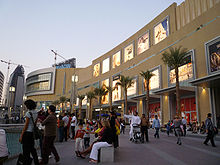
The UAE has been spending billions of dollars on infrastructure. These developments are particularly evident in the larger emirates of Abu Dhabi and Dubai. The northern emirates are rapidly following suit, providing major incentives for developers of residential and commercial property. In addition, UAE President Sheikh Khalifa bin Zayed Al Nahyan has allocated Dh16 billion (US$4.4 billion) for the construction of road networks, new housing communities, drainage networks and other projects, providing integrated solutions to some infrastructure deficits in these areas.
Roads in the western and southern regions are still relatively undeveloped. This has resulted in the continued use of airplanes as the main or alternative mode of transportation for the residents.
The major ports are Port Jebel Ali, Port Rashid, Port Khalid, Port Saeed, Port Khor Fakkan, and Port Zayed.
Dubai International Airport was the 6th busiest airport in the world by international passenger traffic in 2008. There are daily flight services between West and East UAE, which is the only convenient option for passengers travelling between the two parts of the country to places such as Sir Bani Yas. Emirates Airline was the eighth-largest airline in the world in terms of international passengers carried, and fifth-largest in the world in terms of scheduled international passenger-kilometres flown in 2008. Terminal 3 at Dubai International Airport is the second largest building in the world by floor space.
A 1,200 km (750 mi) country-wide national railway is under construction which will connect all the major cities and ports. The cost for the railway will be Dh40bn. While primarily for carrying freight, the second stage will include passenger services between Abu Dhabi and Dubai. It will also connect with rail networks in Saudi Arabia and Oman.
The UAE has signed peaceful nuclear agreements with France, United States, and South Korea, and a MOU with the United Kingdom.
The UAE is presently serviced by two telecommunications operators, Etisalat and Emirates Integrated Telecommunications Company ("du"). Etisalat operated a monopoly until du launched mobile services in February 2007. Etisalat is the sixteenth largest telecommunications firm in the world. Forecasts indicate that the UAE mobile market will increase to 11.9 million users by 2012. Based in Abu Dhabi, Etisalat is the 14th largest mobile network operator in the world, with a total customer base of 100 million.
Internet subscribers are expected to increase from 0.904 million in 2007 to 2.66 million in 2012. The authorities filter websites for religious, political and sexual content.
The Dubai Metro is the first urban train network in the Arabian Peninsula. The Red Line when fully complete will carry an estimated 27,000 passengers per hour in each direction on 42 trains. Work also on the Green Line, which will link Al Qusais to Dubai Healthcare City, began in 2006 and is scheduled for completion in late 2010.
Demographics
| Historical population | ||
|---|---|---|
| Year | Pop. | ±% p.a. |
| 1963 | 95,000 | — |
| 1968 | 180,226 | 12.81% |
| 1975 | 557,887 | 16.14% |
| 1980 | 1,042,099 | 12.5% |
| 1985 | 1,379,303 | 5.61% |
| 1995 | 2,411,041 | 5.58% |
| 1999 | 2,938,000 | 4.94% |
| 2005 | 4,106,427 | 5.58% |
| 2010 | 8,264,070 | 13.99% |
| Sources: | ||
In 2010, the UAE's population was estimated at 8,264,070, of whom only 13% were UAE nationals or Emiratis, while the majority of the population were expatriates. The country's net migration rate stands at 21.71, the world's highest. In recent years, many expatriates have been demanding citizenship but there is currently no naturalisation process in the UAE.
With a male/female sex ratio of 2.2 for the total population and 2.75 for the 15–65 age group, the UAE's gender imbalance is second highest in the world after Qatar.
In 2009, Emirati citizens accounted for 16.5% of the total population; South Asian (Indian, Pakistani, Bangladeshi) constituted the largest group, making up 58.4% of the total; other Asians made up 16.7% while Western expatriates were 8.4% of the total population.
There is a growing presence of Europeans especially in multi-cultural cities such as Dubai Western expatriates, from Europe, Australia, Northern Africa, Africa and Latin America make up 500,000 of the UAE population. The UAE has also attracted a small number of expatriates from countries in Europe, North America, Asia, and Oceania. More than 100,000 British nationals live in the country. The rest of the population were from other Arab states.
The average life expectancy is 76.7 years (2012), higher than for any other Arab country.
About 88% of the population of the United Arab Emirates is urban.
Religion
Islam is the largest and the official state religion of the UAE, though the government follows a policy of tolerance toward other religions and rarely interferes in the activities of non-Muslims.
However, it is illegal in the UAE to spread the ideas of any religion apart from Islam through any form of media as it is considered a form of proselytizing. There are approximately 31 churches throughout the country, one Hindu temple in the region of Bur Dubai, and one Sikh Gurudwara in Jebel Ali.
Based on the Ministry of Economy census in 2005, 76% of the total population was Muslim, 9% Christian, and 15% other (mainly Hindu). Census figures do not take into account the many "temporary" visitors and workers while also counting Baha'is and Druze as Muslim. Non-Islamic religions are mainly followed by foreigners or expatriates. As the majority of the population are non-citizens, of the citizens 85% are Sunni Muslim while 15% are Shi'a Muslims. Omani immigrants are mostly Ibadi, while Sufi influences exist too.
Languages
Arabic is the national and official language of the United Arab Emirates. The Gulf dialect of Arabic is spoken natively by the Emirati people. English is used as a second language.
Largest cities
| Largest cities or towns of the United Arab Emirates 2008 Calculation |
|||||||||
|---|---|---|---|---|---|---|---|---|---|
| Rank | City name | Emirate | Pop. | ||||||
 Dubai |
1 | Dubai | Dubai | 1,770,533 |  Sharjah |
||||
| 2 | Abu Dhabi | Abu Dhabi | 896,751 | ||||||
| 3 | Sharjah | Sharjah | 845,617 | ||||||
| 4 | Al Ain | Abu Dhabi | 374,000 | ||||||
| 5 | Ajman | Ajman | 372,923 | ||||||
| 6 | Ras Al Khaimah | Ras al Khaimah | 171,903 | ||||||
| 7 | Fujairah | Fujairah | 107,940 | ||||||
| 8 | Um Al Quwain | Um Al Quwain | 69,936 | ||||||
| 9 | Khor Fakkan | Sharjah | 49,635 | ||||||
| 10 | Dibba | Fujairah | 30,000 | ||||||
Culture
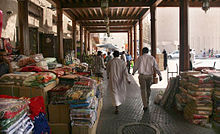
The United Arab Emirates has a diverse and multicultural society. Major holidays in Dubai include Eid al Fitr, which marks the end of Ramadan, and National Day (2 December), which marks the formation of the United Arab Emirates.
Five times every day, Muslims are called to prayer from the minarets of mosques which are scattered around the country. Since 2006, the weekend has been Friday-Saturday, as a compromise between Friday's holiness to Muslims and the Western weekend of Saturday-Sunday.
Most Emirati males prefer to wear a kandura, an ankle-length white tunic woven from wool or cotton, and most Emirati women wear an abaya, a black over-garment that covers most parts of the body. Western-style clothing is, however, dominant because of the large expatriate population, and this practice is beginning to grow in popularity among Emiratis.
Etiquette is an important aspect of UAE culture and tradition, to which visitors are expected to conform. Recently, many expatriates have disregarded the law and been arrested for indecent clothing at beaches. The non-governmental campaign UAE Dress Code aims to educate the expat population on local dressing and its sensitivity to Emirati population.
Literature and poetry
The style and form of ancient poetry in the UAE was strongly influenced by the 8th-century Arab scholar Al Khalil bin Ahmed. The earliest known poet in the UAE is Ibn Majid, who was born between 1432 and 1437 in Ras Al-Khaimah. Coming from a family of successful sailors, Ibn Majid's oeuvre has a total of 40 surviving compositions, 39 of which are verses.
The greatest luminaries in the UAE literary realm during the 20th century, particularly for Classical Arabic poetry, were Mubarak Al Oqaili (1880–1954), Salem bin Ali al Owais (1887–1959) and Ahmed bin Sulayem (1905–1976). Three other poets from Sharjah, known as the Hirah group, are observed to have been heavily influenced by the Apollo and romantic poets.
There are three annual book fairs in the UAE, the well-known Sharjah International Book Fair, the oldest and largest in the country, its Abu Dhabi counterpart and the newly launched Al-Ain Book Fair.
Museums
Many emirates have established museums of regional repute, most famously Sharjah with its Heritage District containing 17 museums, which in 1998 was the Cultural Capital of the Arab World. Abu Dhabi's cultural foundation is also an important place for the presentation of indigenous and foreign art. In Dubai, the area of Al Quoz has attracted a number of art galleries as well as museums such as the Salsali Private Museum.
Abu Dhabi has embarked on the path to become an art centre of international caliber, by creating a culture district on Saadiyat Island. There, six grand projects are planned: the Sheikh Zayed National Museum by Foster + Partners, the modern art museum Guggenheim Abu Dhabi to be built by Frank Gehry, the classical museum Louvre Abu Dhabi by Jean Nouvel, a maritime museum by Tadao Ando, a Performing Arts Centre by Zaha Hadid, and a Biennale Park with 16 pavilions.
Dubai also plans to build a Kunsthal museum and a district for galleries and artists.
2009 saw the UAE’s first pavilion at the Venice Biennale, one of the top cultural events in Europe. The pavilion was called ‘It’s Not You, It’s Me’ and was designed to offer a playful and provocative look at what has been described as the world’s most prestigious contemporary art event. This was the first occasion on which a country from the Persian Gulf has taken part in the Biennale.
Popular culture
The United Arab Emirates is a part of the khaliji tradition, and is also known for Bedouin folk music. Liwa is a type of music and dance performed mainly in communities that contain descendants of East Africans.
Kylie Minogue was paid US$4.4 million to perform at the opening of the Atlantis resort on November 20, 2008. The Dubai Desert Rock Festival is also another major festival consisting of heavy metal and rock artists.
Food
The traditional food of the Emirates has always been rice, fish, and meat. The people of the United Arab Emirates have adopted most of their foods from the surrounding countries including Iran, Saudi Arabia, and Oman. Seafood has been the mainstay of the Emirati diet for centuries. Meat and rice are other staple foods; lamb and mutton are the more favored meats, then goat and beef. Popular beverages are coffee and tea, which can be supplemented with cardamom, saffron, or mint to give them a distinct flavor.
Muslims are prohibited from eating pork, so it is not included in Arab menus. Hotels frequently have pork substitutes such as beef sausages and veal rashers on their breakfast menus. If pork is available, it is clearly labeled as such.
Alcohol is generally only served in hotel restaurants and bars (but not in Sharjah). All nightclubs and golf clubs are permitted to sell alcohol. Specific supermarkets may sell alcohol and pork, but these products are sold in separate sections.
Sports
Football is the most popular sport in the UAE. Emirati football clubs Al-Ain, Al-Wasl, Al-Shabbab ACD, Al-Sharjah, Al-Wahda, and Al-Ahli are the most popular teams and enjoy the reputation of long-time regional champions. The great rivalries keep the UAE energized as people fill the streets when their favorite team wins. The United Arab Emirates Football Association was first established in 1971 and since then has dedicated its time and effort to promoting the game, organizing youth programs and improving the abilities of not only its players, but of the officials and coaches involved with its regional teams. The UAE national football team qualified for the FIFA World Cup in 1990 with Egypt. It was the third consecutive World Cup with two Arab nations qualifying, after Kuwait and Algeria in 1982, and Iraq and Algeria again in 1986. The UAE also recently won the Gulf Cup Championship held in Abu Dhabi in January 2007.
Cricket is one of the most popular sports in the UAE, largely because of the expatriate population from the Indian subcontinent, the United Kingdom, and Australia. The Sharjah Cricket Association Stadium in Sharjah has hosted 4 international test cricket matches so far. Sheikh Zayed Stadium and Al Jazira Mohammed Bin Zayed Stadium in Abu Dhabi also hosted international cricket matches. Dubai has two cricket stadiums (Dubai Cricket Ground No.1 and No.2) with a third, 'S3' currently under construction as part of Dubai Sports City. Dubai is also home to the International Cricket Council. The UAE national cricket team qualified for the 1996 Cricket World Cup and narrowly missed out on qualification for the 2007 Cricket World Cup.
Formula One is particularly popular in the United Arab Emirates, and is annually held at the picturesque Yas Marina Circuit. The race is held at evening time, and is the first ever Grand Prix to start in daylight and finish at night.
Other popular sports include camel racing, falconry, endurance riding, and tennis.
Education
The education system through secondary level is monitored by the Ministry of Education. It consists of primary schools, middle schools and high schools. The public schools are government-funded and the curriculum is created to match the United Arab Emirates development's goals and values. The medium of instruction in the public school is Arabic with emphasis on English as a second language. There are also many private schools which are internationally accredited. Public schools in the country are free for citizens of the UAE, while the fees for private schools vary.
The higher education system is monitored by the Ministry of Higher Education. The ministry also is responsible for admitting students to its undergraduate institutions.
The literacy rate in 2007 was 91%. Currently there are thousands of nationals pursuing formal learning at 86 adult education centres spread across the country.
The UAE has shown a strong interest in improving education and research. Enterprises include the establishment of the CERT Research Centers and the Masdar Institute of Science and Technology and Institute for Enterprise Development.
According to the Webometrics Ranking of World Universities, the top-ranking universities in the country are the United Arab Emirates University (1167th worldwide), the American University of Sharjah (2447th) and Higher Colleges of Technology (2614th).
Health
The life expectancy at birth in the UAE is at 78.5 years. Cardiovascular disease is the principal cause of death in the UAE, constituting 28% of total deaths; other major causes are accidents and injuries, malignancies, and congenital anomalies.
In February 2008, the Ministry of Health unveiled a five-year health strategy for the public health sector in the northern emirates, which fall under its purview and which, unlike Abu Dhabi and Dubai, do not have separate healthcare authorities. The strategy focuses on unifying healthcare policy and improving access to healthcare services at reasonable cost, at the same time reducing dependence on overseas treatment. The ministry plans to add three hospitals to the current 14, and 29 primary healthcare centres to the current 86. Nine were scheduled to open in 2008.
The introduction of mandatory health insurance in Abu Dhabi for expatriates and their dependents was a major driver in reform of healthcare policy. Abu Dhabi nationals were brought under the scheme from 1 June 2008 and Dubai followed for its government employees. Eventually, under federal law, every Emirati and expatriate in the country will be covered by compulsory health insurance under a unified mandatory scheme. Recently the country has been benefiting from medical tourists from all over the GCC. The UAE currently attracts medical tourists seeking plastic surgery and advanced procedures, cardiac and spinal surgery, and dental treatment, as health services have higher standards than other Arab countries in the Persian Gulf.



